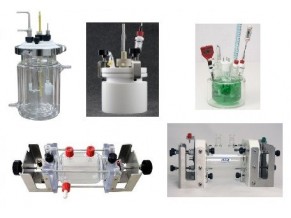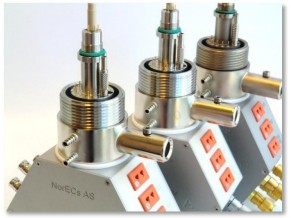No products
Prices are tax excluded
Product successfully added to your shopping cart
There are 0 items in your cart. There is 1 item in your cart.
ELECTROCHEMISTRY, MATERIAL SCIENCE & IMPEDANCE
-
PRODUCTS
- WEATHER STATIONS
- WATER QUALITY MONITORING
- TRANSMITTERS AND TRANSDUCERS
- TRAINING & EDUCATION SYSTEMS
- SPECTROMETERS & SPECTRO-RADIOMETERS
- SENSORS & PROBES
- POWER & ENERGY
- MEASUREMENT AND CALIBRATION INSTRUMENTS
- LIGHT & LASER SOURCES
-
LABORATORY, PHARMACY & MEDICINE EQUIPMENT
- Water Quality
- Vet
- VARIOUS
- VACUUM SYSTEMS
- Ultrasonic Baths
- Stirrers
- SPECTRO-PHOTOMETERS
- Showers
- Sensores y Sondas
- Rotary Evaporator
- Refractometers
- Pumps
- PRECISION BALANCES
- Plant Growth Chambers
- PARTICLE ANALYZERS
- OVENS
- ORBITAL SHAKERS
- Mills
- MILK ANALYZERS
- Microtome
- Microscopes
- Microplate Readers
- MEDICAL ANALYZERS
- Laboratory Reactors
- INFLAMMATION ANALYZERS
- INCUBATORS
- HUMAN TEMPERATURE
- Hotplates
- GAS BURNERS
- Gas Analyzers & Detectors
- FAT ANALYZER
- Evaporators
- Distillers
- Dissolved Oxygen
- Density Meters
- Cultivators
- COLORIMETERS/GLOSS METERS
- COLD STORAGE ROOMS
- Chromatograph
- Chillers, Coolers, Refrigerators
- Chemical Analyzers
- CENTRIFUGERS
- CABINETS AND HOODS
- Body Scanners
- BATHS AND CIRCULATORS
- AUTOCLAVES
- ANALYSERS
- Anaerobic Workstations/Chambers
- AIR QUALITY
- Air Purify
- Instruments for Geophysics and Seismology
- INDUSTRY & PROCESS CONTROL
-
HAND/PORTABLE METERS
- WOOD MOISTURE
- Weather Station
- WATER QUALITY
- Water Flow
- VIDEOSCOPE
- VIBRATION ANALYZERS
- Veterinary
- ULTRAVIOLET
- Thickness Measurement
- THERMAL IMAGING
- TEMPERATURE & HUMIDITY
- TEMPERATURE
- TDS
- Spectrum Analyzers
- Spectrocolorimeters
- SPECTRO RADIOMETERS
- SPECTRO PHOTOMETERS
- Sound Meter
- SOUND LEVEL METERS
- SOLAR RADIATION
- Soil Moisture
- SOIL COMPACTATION
- SOIL CALCIMETER
- Salinity
- Relative Humidity
- Refractometers
- RADIATION (Gamma, Beta and X)
- Quantum Light 0-4000 µmol
- PRESSURE & TEMPERATURE
- Pressure
- Power Analyzers
- PHOTOSYNTHETIC LIGHT
- pH
- Particles in Air
- OXIGEN
- ORP
- OIL ANALYZERS
- MULTIFUNCTION
- LUXOMETROS
- Leakage Meters & Detectors
- ION MEASUREMENTS
- INFRARED Temp. RADIOMETER
- Humidity Sawdust/Hay/Pellets
- HUMIDITY OF CONCRETE
- GLOSS
- GAS ANALYZERS
- FORMALDEHYDE
- Food
- Fluorometers
- Distance rangefinder
- DISSOLVED OXYGEN
- Density
- CONDUCTIVITY METERS
- CONDUCTIVITY
- Colorimeters
- CO2 (Carbon Dioxide)
- CO (Monóxido de Carbono)
- CHLOROPHYLL CONCENTRATION
- Cement Moisture
- ANEMOMETER
- AIR QUALITY
- ACCESORIES
- FUEL CELL HARDWARE
- FLOW METERS
- ENVIRONMENTAL PRODUCTS
- Environmental Hygiene
- ELECTROCHEMISTRY, MATERIAL SCIENCE & IMPEDANCE
- ELECTRICITY NETWORK ANALYZERS
- DATA LOGGERS
- CLOROPHYL PHOTOSYNTHESIS
- CATALOGS
-
Browse by Measurement
- Wood Moisture
- Wind Direction
- Water Quality
- Water Level
- WATER FLOW
- VOC
- Viscosity
- Vibration Analyzers
- Vet
- V & mV
- Ultraviolet Light
- Turbidity
- Time
- Thickness
- Temperature
- Telemetry
- TDS
- Strain Gauges
- Stomatal Conduct.
- Sterilization
- States (ON/OFF)
- Spectroradiometry
- Spectrophotometry
- Spectrometry
- Solar Radiation
- Soil Water Potential
- Soil Moisture
- Sodium
- Snow Depth
- Seismology
- Sap/Sap Flow
- Sap Flow
- Salinity/Conductivity
- RELAY OUTPUTS
- Relative Humidity
- Rain Gauge
- Radon
- Radiation
- Quantum Light
- Pulses
- Pressure
- Potassium
- Pipes Inspection
- Photosynthesis
- Pharmacy & Medicine
- pH
- Peristaltic Pumps
- Penetrometers
- Particle Meters
- Particle Counters
- PAR Light
- Ozone (O3)
- Oxígeno Disuelto DO
- ORP - REDOX
- Occupation and Time
- O2 Oxygen
- Noise
- Nitrogen Generators
- Nitrate
- Network Analyzers
- Movement & GPS
- Meteorology
- Load Cells
- Light & Laser Sources
- Level
- Leaf Wetness
- Leaf area index
- LCR
- KW & KW/H
- Ions
- Impedance
- Idc (DC Current)
- Iac (AC Current)
- Haze/Fog
- GEOTECHNICS
- Geiger counters
- GAS (ANALYZERS)
- Fuel Cells
- Fluorescence
- Flavor/Taste/Acidity
- Exterior humidity
- Events
- Evapotranspiration
- Energy and Power
- Electrochemistry
- Distance
- Differential Pressure
- Diesel Level
- Dew Point
- Destiladores
- Density
- Dendrometers
- Cryoscopes
- Cracks in Buildings
- Conductivity in Water
- Conductivity in Soil
- COMPRESSED AIR
- Color / Colorimeter
- CO2 Carbon Dioxide
- CO Carbon Monoxide
- Chlorophyll
- Calibrators
- Calcium
- Autoclaves
- Atmospheric Pressure
- Ammonia
- Airflow
- Air Speed
- Air quality
- 4-20mA
- Highlighted
-
Brands
- WonATech
- Walz
- Veris Industries
- Vegetronix
- UPWARD INNOVATIONS
- Tempmate
- Tanel
- TandD
- StellarNet .Inc
- Spectrum Technologie
- SolGeo
- SCRIBNER ASSOCIATES
- Scientech Tech.
- RST Instruments
- RIKA SENSORS
- RADONOVA
- Quarta-Rad
- PSI (Photon Systems)
- Pronamic
- Particles Plus
- Onset
- Nvis Technologies
- NorECs
- NexCeris - NextCell
- Nesa
- MRC Lab. Equipment
- Milky Day
- Meter Environment
- MEATROL
- Magnelab
- MAE srl
- Konted
- KandH
- Judd Communications
- IMKO
- iButton
- Hubei Fangyuan
- HORIBA/Laqua
- HONGYUV
- Grant Instruments
- Gentos
- Fuehler Systeme
- FRIGGA
- EMS Brno
- EME Systems
- ELECTROCHEM INC.
- Eko Instruments
- Ecomatik
- Delta-T
- Delta Ohm (Senseca)
- Decagon
- Davis
- Comet System
- Chao Sensor
- Capetti Elettronica
- Bosean
- Blue Maestro
- Autoedu
- Atago
- Aquas Inc.
- Aquaread
- Apogee Instruments
- AO-Electronics
- Algodue
- AIRY TECHNOLOGY
- Acksen
- 3nh
- Spectral Evolution
-
Applications
- Water
- Veterinary
- TRAINING / EDUCATIONAL
- SPECTROSCOPY & SPECTROPHOTOMETRY
- SCIENCE AND RESEARCH
- MEASUREMENT AND CALIBRATION INSTRUMENTS
- LABORATORY, PHARMACY, MEDICINE AND HEALTH
- INDUSTRY
- Geotechnics /Seismology
- ENVIRONMENTAL SCIENCES
- ENVIRONMENTAL HYGIENE
- Cold Chain - Transport
- Building Monitoring
- AUTOMOTIVE
- AUTOCLAVES
fuentes RSS
No RSS feed added

Potentiostats, Galvanostats, Impedance Analyzers, Frequency Response Analyzers, Electrochemical Cells, Sample Cells, Reference Electrodes, Corrosion, Fuel Cells, Electrochemical Scanning Systems.
Electrochemical impedance spectroscopy (EIS) measures the dielectric properties of a medium as a function of frequency and is an effective method for t...
Potentiostats, Galvanostats, Impedance Analyzers, Frequency Response Analyzers, Electrochemical Cells, Sample Cells, Reference Electrodes, Corrosion, Fuel Cells, Electrochemical Scanning Systems.
Electrochemical impedance spectroscopy (EIS) measures the dielectric properties of a medium as a function of frequency and is an effective method for the characterization of electrochemical systems.
With the best brands: Scribner Associates, Pine Research, Wonatech/ZiveLab, Pragma Industies, etc.
Modern electrochemical studies use three electrode systems for investigations of reaction mechanisms related to redox chemistry and other chemical phenomena. The dimensions of the resulting data depend on the experiment. In voltammetry, the electric current in amperes is represented as a function of electric potential in the voltage. In mass electrolysis total coulombs passed (total electrical charge) is plotted against time in seconds, even though the test is measured electrical current (amps) over time. This is done to show that the experiment is approaching an expected number of coulombs. Most early Potentiostats could operate independently, providing data output through a physical data trail. Modern potentiostats are designed to interact with a personal computer and operate through a dedicated software package. Automated software allows the user to quickly switch between experiments and experimental conditions. The equipment allows data to be stored and analyzed more efficiently, quickly and accurately than historical methods.
A potentiostat is a control and measurement device. It is composed of an electrical circuit that controls the potential through the cell by detecting changes in its resistance, consequently varying the current supplied to the system: a higher resistance will lead to a decreased current, while a lower resistance will lead to at an increase in current, in order to keep the voltage constant as described by Ohm's law:
I = {frac VR} valid if 'R' is not null
R = {frac VI} valid if 'I' is not null








